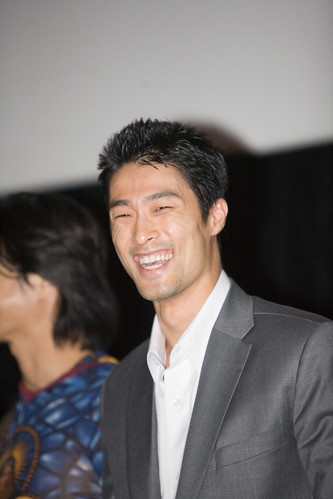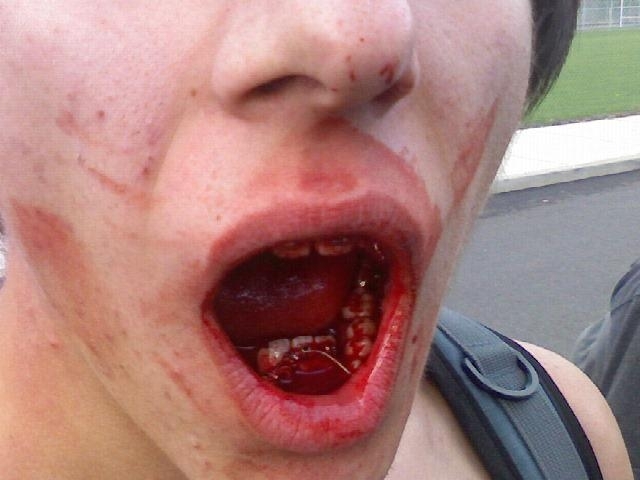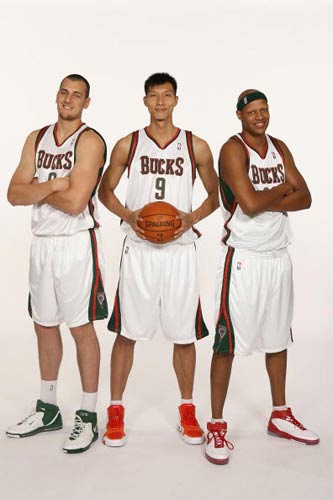Dear Yi,
Dear Yi,
Please

slam dunk me

You 7' stud!

Love and tickles,
Rebecca
Me No Luv You Long Time...
And now for a few more hotties of the month:



 GO SCOTT...GO SCOOOTT!!
GO SCOTT...GO SCOOOTT!!
Who were the Chinese-Americans?
it is estimated that over 75% of all overseas Chinese in North America until the mid- to late-20th century claimed origin in Taishan, the city is also known as the "Home of Overseas Chinese."
Taishanese speak the Taishan dialect, a dialect of Cantonese. Before the 1970s, Taishanese was the predominant Chinese language spoken throughout North America's Chinatowns. It is the de facto language of Taishan.
Taishan, a farming town with a population of 1 million today, has seen 1.3 million emigrate over the years, according to local records. The exodus began 150 years ago, when desperate farmers walked days from the hamlets near the port city of Guangzhou, got on boats and sailed off for another chance.Now, Taishan (Toysan) is a city in Guangdong (Canton):
Many headed for meiguo, the "Beautiful Country," especially jinsan (in Cantonese, gumsan) or "Gold Mountain" -- in other words, America and San Francisco. Chinese American historian Him Mark Lai, using 1988 data, placed the number of Taishanese in the United States at around 430,000, or about 70 percent of Chinese Americans in the United States in the 1980s. That number is estimated at half a million today.

Tin Din Ng: Back then, Chinatown, because most of the... the history goes like this, in the beginning, most of the people in New York’s Chinatown had been from Taishan, there were lots of people from Taishan, and a lot of decisions were made by those from Taishan, all the way until they created the Lian-cheng Gong-suo. In Chinatown, Wen-ye was mainly used by the people from Taishan. This situation continued all the way until the eighties before it started to change, because in the 80s, China became more open, and after it became more open, lots of new immigrants came.As you can see...the reality is that up until the 80s..."Chinese-Americans" were really essentially "Taishan-Americans." Just one tiny, ethnic sub-group from one city in all of China.
Tin Din Ng: In the beginning when I was at Hong Kong, because I had some siblings and some relatives, all of them in America. My entire family had already left mainland China then, they had all left mainland China.
Florence Ng: Left where in China?
Tin Din Ng: Taishan. Taishan in Canton. I’m of Taishan descent. After 1957, our entire family left Taishan. The old folks, several of the old folks, some somewhat younger ones and my sister, everyone came to America and Canada.
Tin Din Ng: It happened like this, the CCBA has already had 120 years of, 120 years of history. In the beginning, in the very beginning, the people from the Taishan Ning-yang Organization went and acted as the chairman of the CCBA. Because one hundred years ago, the Chinese in New York, 99% of them were from Taishan, Taishan people, so those who acted as the chairmen of the CCBA, and those that took responsibility for things at the CCBA were all people from Taishan. Each year, the chairmen came from the Taishan people. Later on, before 1990, there was a period of ten or twenty years when there were a different four, they weren’t from Taishan, I think Enping, Kaiping, and they weren’t Taishan, there were even those from other provinces, and when they came, there wasn’t any reason why the CCBA was just for Taishan people


